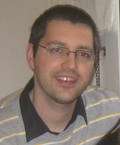Cited By
View all- Tihanyi NBisztray TFerrag MJain RCordeiro L(2025)How secure is AI-generated code: a large-scale comparison of large language modelsEmpirical Software Engineering10.1007/s10664-024-10590-130:2Online publication date: 1-Mar-2025
- Zhao LLi HChen YPan XGuo S(2025)Structuring Semantic‐Aware Relations Between Bugs and Patches for Accurate Patch EvaluationJournal of Software: Evolution and Process10.1002/smr.7000137:2Online publication date: 2-Feb-2025
- Fei ZGe JLi CWang TLi YZhang HHuang LLuo B(2024)Patch Correctness Assessment: A SurveyACM Transactions on Software Engineering and Methodology10.1145/370297234:2(1-50)Online publication date: 8-Nov-2024
- Show More Cited By



